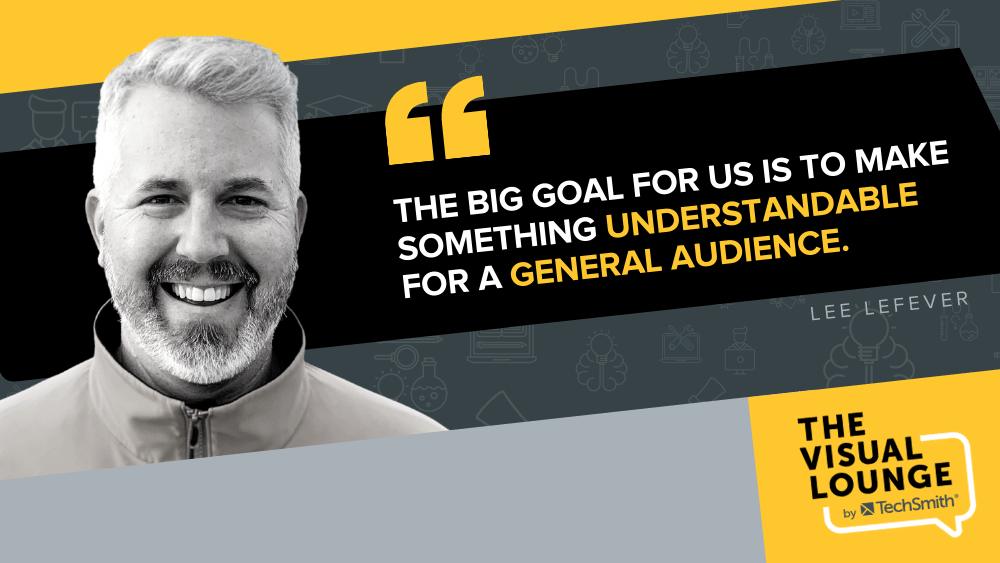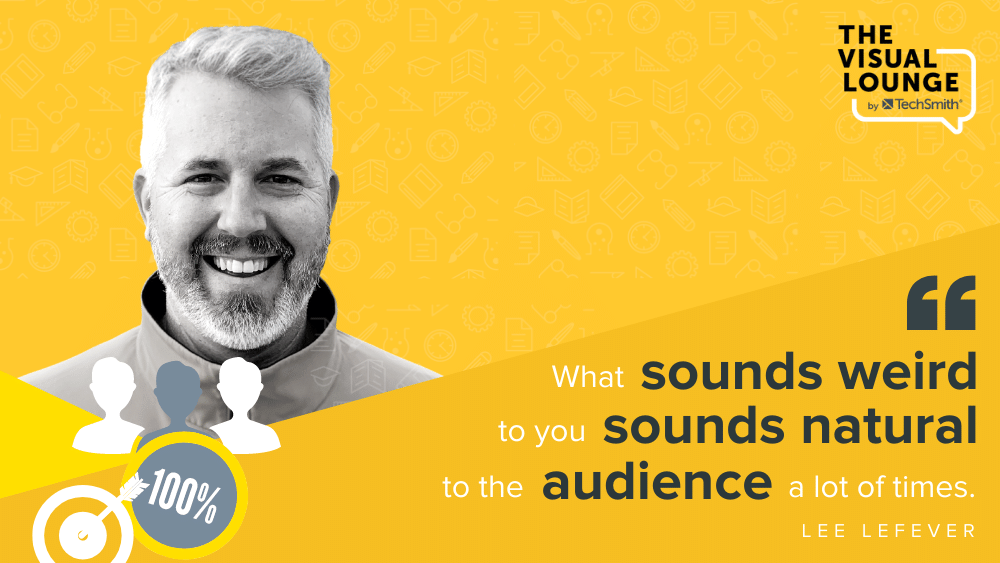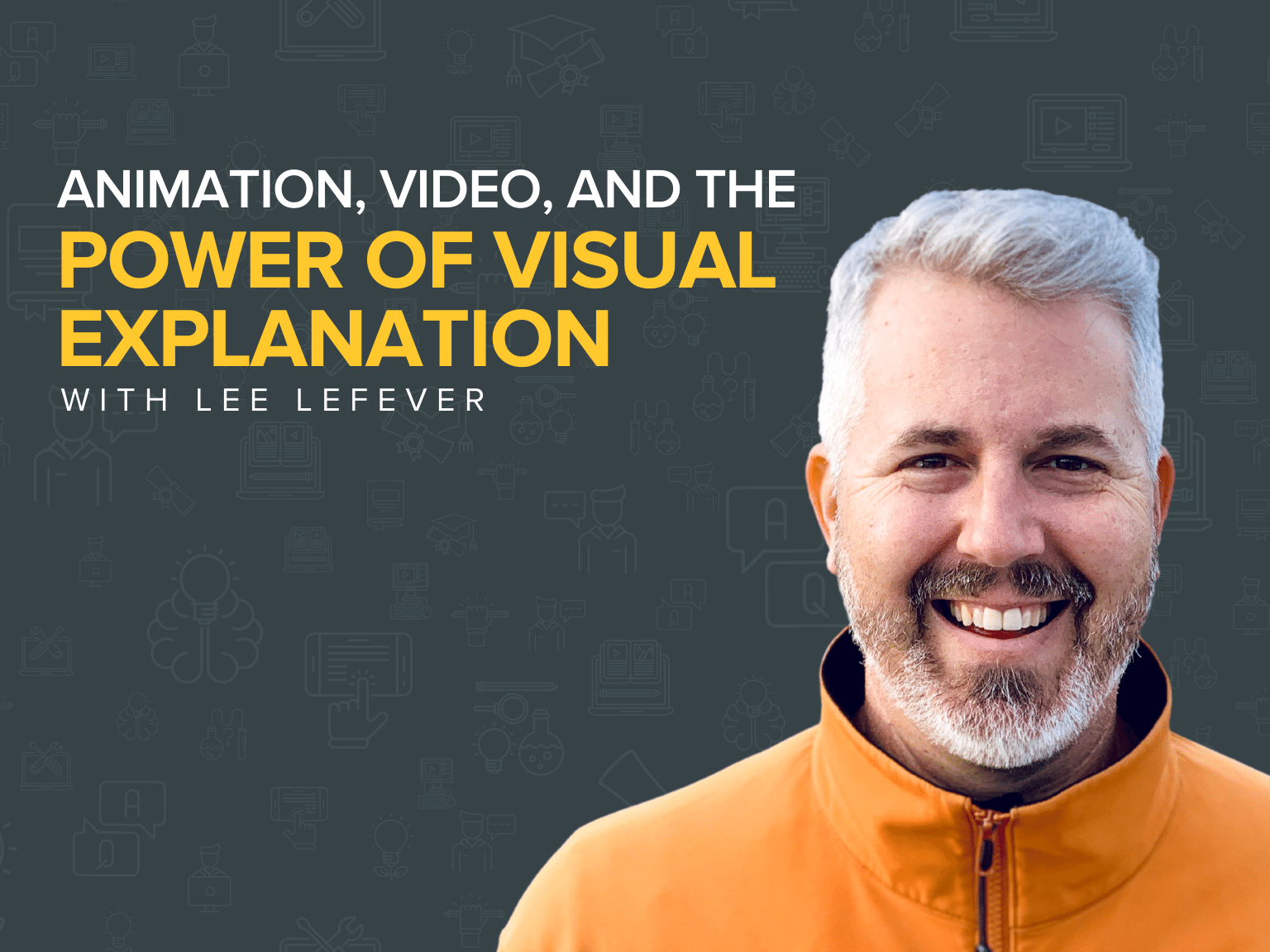What makes a solid explainer video? The kind that gets your point across fast, without confusion, and equips the audience with all they need to know.
There are many components that go into a good explainer video. Lee Lefever, Co-Founder of Common Craft, breaks them down in this episode of The Visual Lounge.
Common Craft excels in creating simple animated videos to explain concepts suitable for use in online presentations, courses, classrooms, and more. With a refreshingly simple animation style, Common Craft’s videos focus totally on the audience and the content while also telling a story in a unique way.
As well as being the Co-Founder of Common Craft, Lee is also the author of two books – ‘Big Enough’ and ‘The Art of Explanation.’ He’s worked with clients such as Google, Intel, Lego, Microsoft, and more.
This episode covers a lot of ground on everything you need to know to craft a successful explainer video. You’ll hear why it all begins with the audience, why keeping it simple is usually best, and how to tell a great story.
You can watch the video on this topic at the top of this post, to listen to the podcast episode, hit play below, or read on for more…
What makes a good explainer video?
Anyone can put together a video to explain something, but a truly great explainer video has a few common elements.
As Lee explains, the most important thing is that videos should focus on the audience. Explainer videos are designed to transfer information to an audience in the hope that they’ll retain it. So, it needs to be tailored to that audience. Explanations don’t work in a vacuum. It’s all about context.
“If I walked into a conference full of physics PhDs, who were doing presentations about physics, I might think, oh god, these explanations are terrible. I don’t understand any of this. But the truth is, it’s just not for me.”
So, the first step is to consider what the audience knows and what they’ll understand. Your language and how you explain things should sound familiar to your audience.
The next thing that Lee mentions is that explainer videos need to set clear expectations. A common trap people fall into is worrying that they’ll sound condescending. But Lee thinks this can be mitigated if you set an expectation at the beginning.
“I’m just going to take a couple of minutes and talk about this from a very simple standpoint so that we can all start on the same page.”
The third thing Lee talks about is context. If we know a subject really well, we sometimes assume the audience has the same experience and knowledge. This is commonly called “the curse of knowledge,” and it can make it really difficult to teach someone something.
But it’s important not to fall into the habit of talking about concepts or terminology that the audience won’t understand.
“Sometimes taking a step back, talking about the big picture in the world where this idea lives can be really powerful.”
Getting familiar with an unfamiliar audience
So, if familiarity is key, what if your audience is totally unfamiliar?
If you’re ever pulled in to create an explainer video for an external company, you may not know your audience well at all. This can be a bit of a roadblock, but Lee has some pointers on what you can do about it.
He says that the easiest way around it is to talk to people in that audience. Try writing a basic script that includes the language you think the audience will use and get someone to take a look over it. Ask them what they think sounds familiar or weird to them and tweak it.
If the company has existing explainer videos, take a look on YouTube and familiarize yourself with the audience’s language.
What to include in your videos
Your own video style may be personal to you, your brand, and your audience, but take a leaf out of Common Craft’s book. According to Lee, all Common Craft videos are made in the same way.
They started out with physical paper cut-outs, stop motion animation on a whiteboard, and it was that way for many years. Eventually, the tools changed, and so did the process. Everything became digital and created through software instead to make it more efficient.
However, it’s the same explanation style, voiceover, artwork that you see in their videos today.
Consistency like that allows you to focus on the content and the message rather than the style or the branding. One of Common Craft’s goals is to make things understandable for a general audience, and so it’s easier to stick to a simple style you can use for different scenarios.
One thing that Lee emphasizes is that explainer videos should be very “low noise.” This means that nothing is on the screen that doesn’t need to be there. There’s not much distracting animation, eye-catching graphics, or bright colors to distract you.
The benefit of this low noise approach to visuals is that it helps to reduce cognitive load. With fewer things to concentrate on and get distracted by, the message behind the video is easier to absorb.

Deciding what goes into a video
It’s so easy to get carried away and include lots of different things in your videos. But in most cases, this ends up as a long-winded video that could have been two minutes long instead.
At Common Craft, they like to keep things short and sweet, starting with the script. Lee aims to have a script that’s just 450 words or so, which translates to two or three minutes.
Within the script, he tries to identify two or three key points that he wants the audience to remember once the video’s over. This helps to get around the ‘curse of knowledge’ problem that a lot of explainer videos suffer from.
When you know the subject well, it’s always tough to try and teach it to others who don’t know what you know. But keeping your videos short, structured, and simple, you can stay on task.
The role of storytelling
Too often, people overemphasize what storytelling is in the explainer/instructional video world. It doesn’t have to mean a long sweeping narrative or a Hero’s Journey-type epic.
Lee likes to think about it in a simpler way. He says that the moment a human is in a situation, it becomes a story. You’re watching this human change and experience something.
“The basic structure is basically, meet Bob. Bob has a problem. Bob feels bad. Oh, look, Bob found a solution. Bob feels great. Don’t you want to feel like Bob? So that’s really the structure of it. It’s just showing a person trying to solve a problem and discovering what the solution to that problem is.”
Sometimes that solution is a product, sometimes it’s an idea or a strategy, or sometimes it’s a big picture thing. Taking Lee’s example, there’s no need to know much more about Bob than that. You don’t need to know about his childhood or his favorite color. All you need to know is he’s a person.
What you need to make a good explainer video
We’ve talked a little bit about the content, but what about behind-the-scenes? Lee says that enthusiasm from whoever is creating the video or doing the voiceover is key. It’s “infectious,” which can help to tell the story.
Another recommendation from Lee is to talk slower than you’d like. This is a common problem for those new to making videos. They typically talk way too fast and try to get the information out too quickly.
Lee says that you need to clearly enunciate, speak with enthusiasm, and also talk slowly. While it may feel weird to you, you’re not the audience.

Don’t confuse marketing with explaining
Lee’s closing words of wisdom are a reminder not to confuse marketing with explaining. A common thing that businesses do is they’ll create an explainer video which is just a marketing tactic in disguise.
“Sometimes they call things an explainer when really it’s really just an advertisement.”
It’s understandable that businesses want to promote their products, but Lee says you should be careful about the tone and intent of the video. Sometimes a video that has a strong marketing message doesn’t sit right with the viewer.
“You’re selling to me, like I thought this was going to be something that I was going to learn from, and obviously, you just really want me to buy something.”
Camtasia makes it easy to create videos
Professional-quality videos are easy with Camtasia’s easy-to-use features.
Download Now
To hear more wisdom from Lee, you can watch or listen to the full episode at the top of the page. Or, for more tips on creating explainer or instructional videos, head over to TechSmith Academy for more episodes and resources like this.



Share